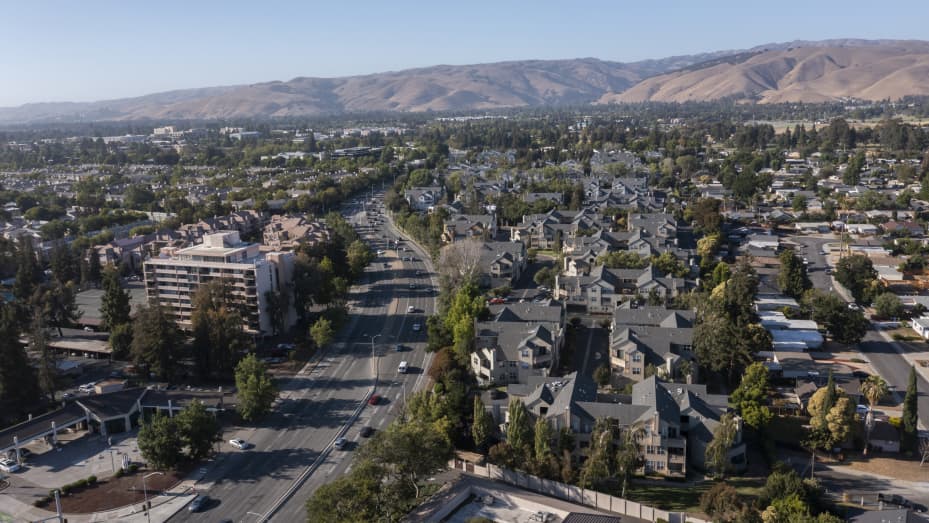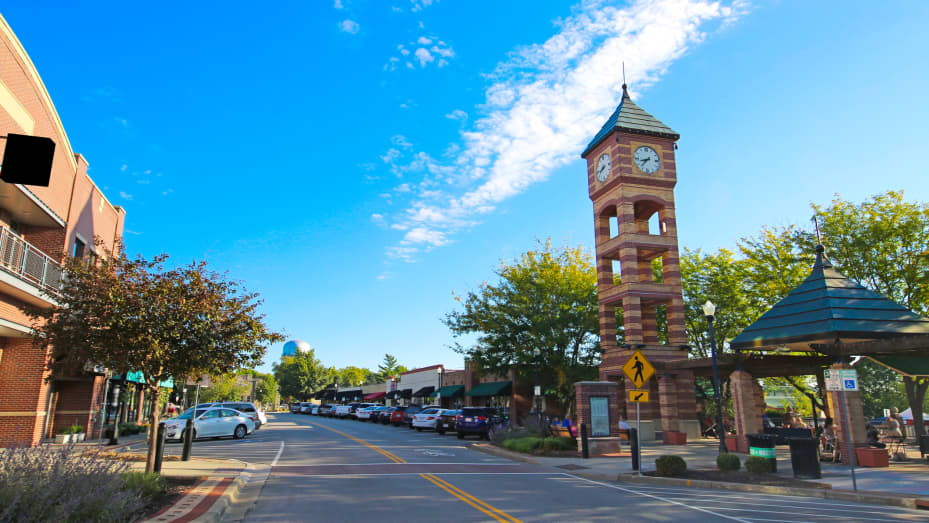The national housing market's value has surged to $47.5 trillion, marking a $2.4 trillion increase in the past year, as per a preliminary Redfin analysis of over 90 million homes in December. The shift towards remote work continues to shape this growth, particularly in specific city types.
The overall value of U.S. homes rose by 5.3% in December compared to the previous year, the most considerable increase in 11 months and up 13.3% ($5.6 trillion) from two years before. The most significant spikes occurred in more affordable metropolitan areas, while expensive regions and pandemic boomtowns either saw slight gains or declines.
Cities like Newark, New Haven, Camden, Charleston, and Elgin experienced notable increases in home values, attributed to attracting individuals priced out of major cities and the rise of remote work opportunities. These locations resemble what experts refer to as "secondary cities," acting as secondary hubs for larger metropolitan regions.
In contrast, cities like Boise, New York City, New Orleans, and Stockton experienced declines in home values, while others such as Philadelphia and Denver saw minimal increases due to high costs or pandemic-induced value spikes.
Home values in urban areas increased by 3.6%, suburbs by 5.6%, and rural areas by 6.3%. Suburbs saw a resurgence during the pandemic due to remote work and affordability concerns. Despite having higher home values, suburbs contain more properties as most Americans reside there, compared to urban and rural areas.
Although the housing market froze and existing home sales reached three-decade lows last year, home prices have continued to rise for three main reasons: limited inventory, a previous dip in home values, and new home constructions influencing total home values.
While homeowners have gained increased housing wealth, prospective buyers are facing challenges due to high mortgage rates, escalating home prices, and low inventory. Forecasts suggest a possible decline in mortgage rates by the end of 2024, but rates currently stand at 7.10%.
Overall, despite predictions of increased affordability, the average home value rose from $474,740 in December 2022 to $495,183 by December of the latest year according to Redfin's findings.
A February report from WalletHub ranked the happiest cities in America for 2024. To rank the cities, the report looked at more than 180 of the largest U.S. cities and examined them across three key dimensions:
- Emotional and physical well-being
- Income and employment
- Community and environment
The three categories were evaluated using 29 metrics graded on a 100-point scale, with a score of 100 representing maximum happiness. Some categories include a life-satisfaction index, life expectancy, job satisfaction, income-growth rate, and a well-being “community” index score.
While Florida is home to Disney World, often referred to as the happiest on Earth, the Sunshine State didn’t have any city rank in the top 10.
Fremont, California is the happiest city in America
For the third year in a row, Fremont, California is the happiest city in America.
Fremont had a total score of 74.16 and ranked 85th in income and employment and third in community and environment.
The California city has the highest-earning middle class, according to a 2023 SmartAsset study.

Fremont is located in the East Bay region of the Bay Area and has a substantial tech industry population because of its proximity to Silicon Valley and San Francisco.
The city has the highest share of households with an income above $75,000, at nearly 80%, the WalletHub report states.
Another contributing factor is that Fremont has the country’s lowest separation and divorce rate, at only 8.9%.
10 happiest cities in America
- Fremont, Calif.
- Overland Park, Kan.
- San Jose, Calif.
- Madison, Wis.
- Irvine, Calif.
- Honolulu, Hawaii
- San Francisco, Calif.
- Pearl City, Hawaii
- Columbia, Md.
- Scottsdale, Ariz.
Overland Park, Kansas, is the second-happiest city in the U.S., up from the No. 4 spot in 2023.
It had a total score of 69.78 and ranked sixth in emotional and physical well-being, 36th in income and employment, and sixth in community and environment.

Overland Park has the lowest poverty rate in the country at 4.2% and one of the lowest unemployment rates at 3%. Residents in Kansas City get more sleep than people in most other cities, according to the report.
Overland Park is the second-largest city in Kansas and the median household income is $92,769, according to the city’s website.

